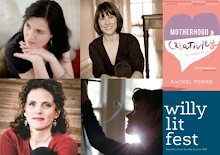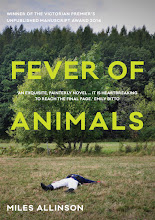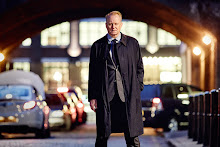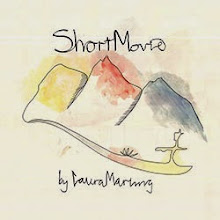
There are some pretty interesting things going on around the world on the art and motherhood front. Despite struggling for over a year to convince a publisher that there was indeed a market for my book (thank you again Red Dog Books for your faith!), I suddenly feel part of a mini-zeitgeist! For whatever reason, this subject seems to be experiencing a kind of resurgence around the world. I never cease to be amazed by the phenomeonon of sychronicity.
There is certainly a potent context with the whole "Motherwars" debate of recent years and the emergence of motherhood/childcare as Western feminism's final frontier--I do talk about this in The Divided Heart. But art, as a vocation that demands so much of someone and for which the rewards can be so unmeasurable (much like mothering), is carving out it's own special genre within this broader agenda.
Some of you might already have heard about the new doco now doing the festival circuit to great acclaim in the US: Who Does She Think She Is? by filmmaker Pamela Tanner Boll, who produced the extraordinary Born Into Brothels, which won the Academy Award for Best Documentary a few years ago. Funnily enough, Pamela told me that at one time she wanted to title the film "A divided heart: On art and motherhood" but was told it was too "literary"!
The film looks at the lives of "five fierce women who refuse to choose". It explores the situation for artist-mothers as a way in to "some of the most problematic intersections of our time: mothering and creativity, partnering and independence, economics and art". It also reminds us that, despite all we have gained, we still live in a world where the average punter on the street struggles to name a handful of women artists. When this film makes it to Australia, it'll be a super-exciting event (on my calendar at least). Will keep you posted...
What also makes this so exciting is that a film version of The Divided Heart is also in the pipeline. I was approached a while back by producer Kylie Bryant, who (among other things) made the incredibly moving short film Breathe, and has just shot a doco on the Lentil as Anything mob--the restaurant chain with the "pay what they can afford or feel the food deserves" ethos. The success of the US film has proven that there is an audience for such a topic; the key will be making a film that complements "Who Does She Think She Is?" in the Australian context.
There is nothing more affirming than having people approach you after talks or via letter or email to tell you what your book has meant to them--except perhaps having someone tell you that not only has it been meaningful, but they want to option the film rights! It's a bit of a fantasy, isn't it? (Even if in my case we're not talking 4-figures, let alone 5 or 6--such is the life of the small-niche author.) Any ideas of what/who you would like to see on screen--all those things a printed book can't convey--please speak up.
I was also going to have a little rave about conferences on the art-motherhood subject; an American anthology I've been asked to contribute to; a new Australian magazine being launched soon with articles from me and from Anne Manne on the motherhood theme... but I think I've said enough for one night... more soon.

















